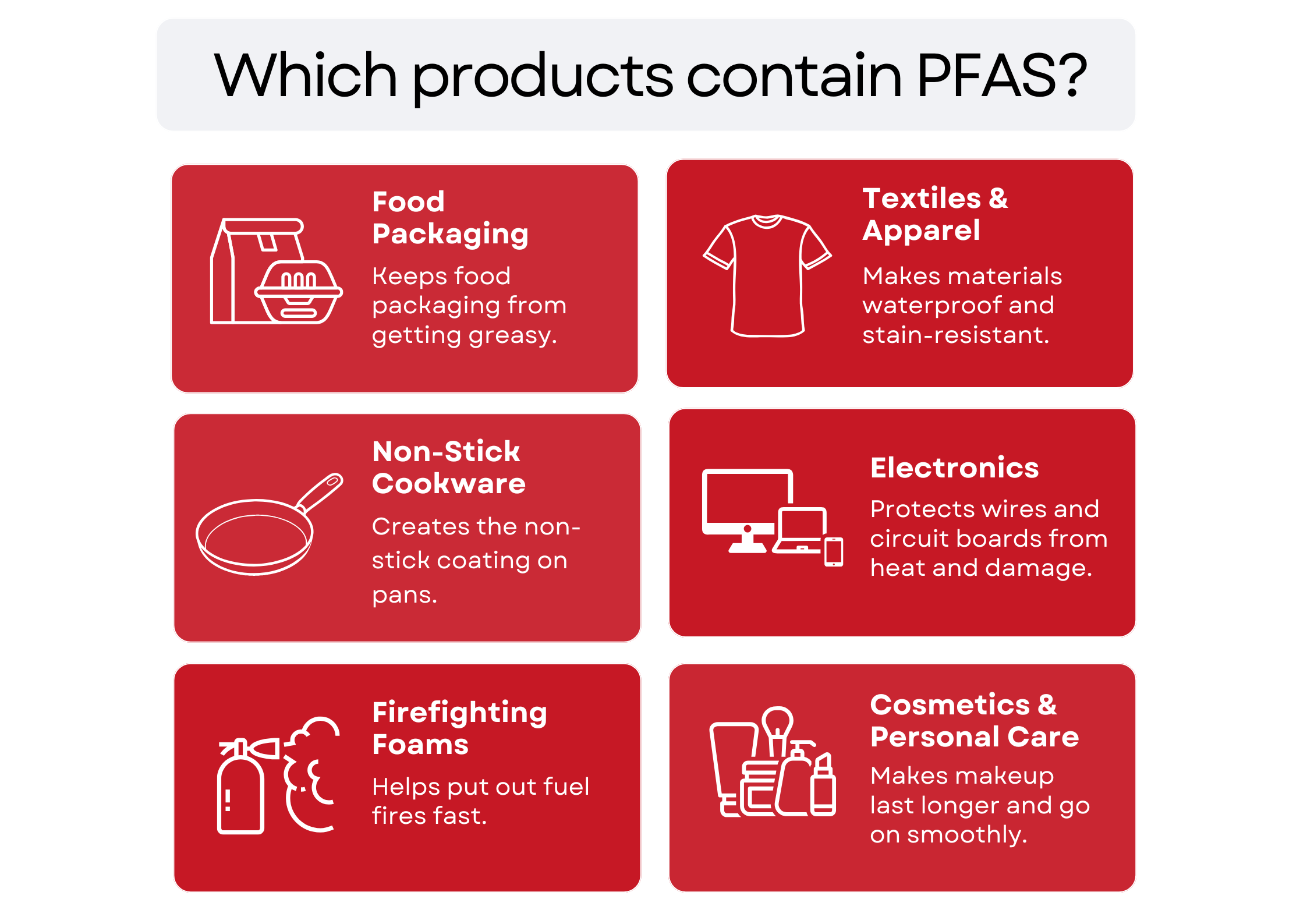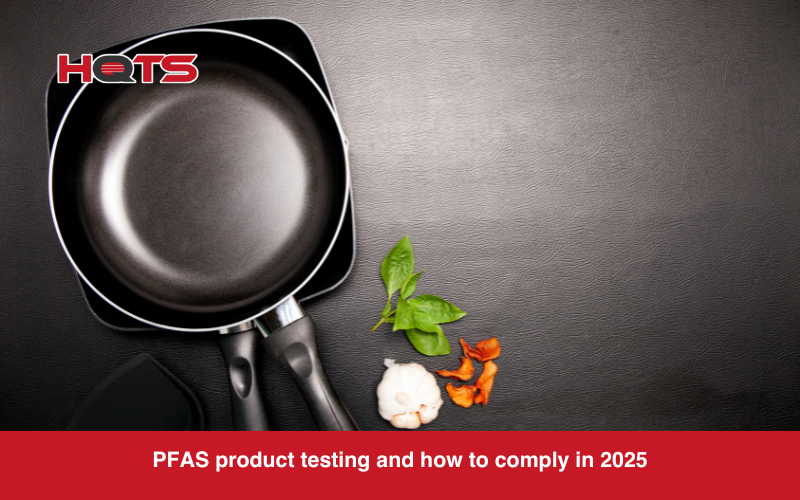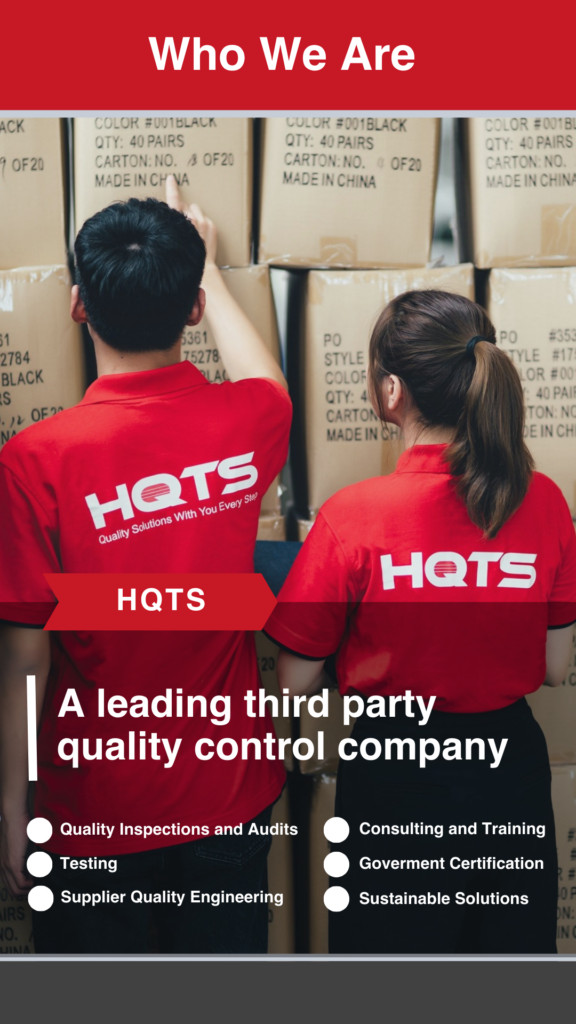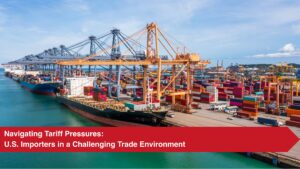More brands and customers are worried about PFAS in products. With stricter regulations and growing demand for PFAS-free options, companies need to understand how to stay compliant. But keeping up with different rules in the EU and the U.S. can be confusing. Read on as we explain what PFAS are and how testing can help make sure your products are PFAS-free.
What are PFAS?
PFAS are man-made chemicals found in everyday products like non-stick pans, waterproof clothes, food packaging, electronics, and even cosmetics. They resist heat, water, and oil, making them useful—but they don’t break down. Over time, PFAS can build up in the environment and even in living things. That’s why they’re called “forever chemicals.”
Cleaning them up is difficult and expensive, and exposure has been linked to serious health risks like cancer, immune system issues, reproductive problems, high blood pressure, and thyroid disease. Because of these risks, PFAS regulations are tightening fast.
Which products have PFAS?

- Food packaging – Grease-proof wrappers, fast-food boxes, and microwave popcorn bags contain PFAS to keep oil and moisture out.
- Clothing & fabrics – PFAS make rain jackets, outdoor gear, carpets, and upholstery waterproof and stain-resistant.
- Non-stick cookware – Teflon (PTFE) gives non-stick pans their smooth surface.
- Electronics – PFAS keep electronics from overheating and protect circuit boards and cables.
- Firefighting foams – AFFF (aqueous film-forming foam) was widely used at airports and military bases to fight fuel fires.
- Cosmetics and personal care – Some waterproof mascaras, long-wear foundations, and even dental floss use PFAS for a smoother texture and longer wear.
PFAS product testing?
PFAS testing helps companies and consumers find out what types of PFAS are in the water they drink and the products they use. Testing labs like HQTS usually use different methods to measure how much PFAS is present overall. The most common types of PFAS testing are Total Fluorine and Total Organic Fluorine screening or Targeted Analysis. If you want more information on PFAS compliance and regulations, we’ve created a complete guide explaining everything.
Total Fluorine and Total Organic Fluorine screening
Total Fluorine Screening and Total Organic Fluorine Screening are basic tests that companies often use to check if PFAS are present at all.
They work like so:
Total fluorine screening measures all the fluorine in a sample. The sample is burned, and the gases released are tested using a special process called ion chromatography. This follows a standard method (EN 14582) to ensure accurate results.
Total organic fluorine (TOF) screening is similar but only looks at fluorine in organic compounds, ignoring inorganic forms. Before testing, the sample is treated with a solution to separate organic fluorine. Then it’s burned, and the gases are analyzed the same way as total fluorine screening.
Targeted Analysis
Then if companies or consumers want to know exactly which PFAS are in their products, they can use a test called Targeted Analysis. The gold standard for Targeted Analysis is liquid chromatography-tandem mass spectrometry (LC-MS/MS).
That sounds complicated, but here’s how it works: first, anything that’s not PFAS is removed from the sample. Then a machine identifies each PFAS based on its weight and how it breaks down, making the results highly accurate.
After removing anything unnecessary, the sample is tested using gas chromatography (GC-MS) or liquid chromatography (LC-MS/MS). These methods help detect even tiny amounts of PFAS, giving clear and reliable results.
PFAS testing solutions from HQTS
At HQTS, our in-house testing solutions help you get a clear understanding of the specific PFAS in your products. We can test a wide range of products for PFAS—everything from waterproof fabrics, cosmetics, and food packaging to electronics, furniture, paint, and non-stick cookware. With global regulations tightening quickly, it’s more important than ever to stay ahead and protect your supply chain. We offer testing services that meet the standards of EU REACH Appendix 17 and POPs Appendix 1, helping you stay compliant with international rules.
Our PFAS testing includes two main methods:
- Targeted Testing for specific PFAS
Using the EN 17681 standard, we extract PFAS compounds with methanol in an ultrasonic bath. Then, we identify and measure specific PFAS using advanced tools like LC-MS/MS or GC-MS/MS. - Total Fluorine Testing
Based on the EN 14582 method, this test measures the total amount of fluorine in your sample. The sample is burned in a sealed system under pressure, converting fluorine compounds into fluoride. We then analyze the fluoride using ion chromatography.
Whether you need a broad overview or a detailed analysis of the PFAS in your products, our team has the expertise and tools to keep your products compliant. Speak to our experts now.





